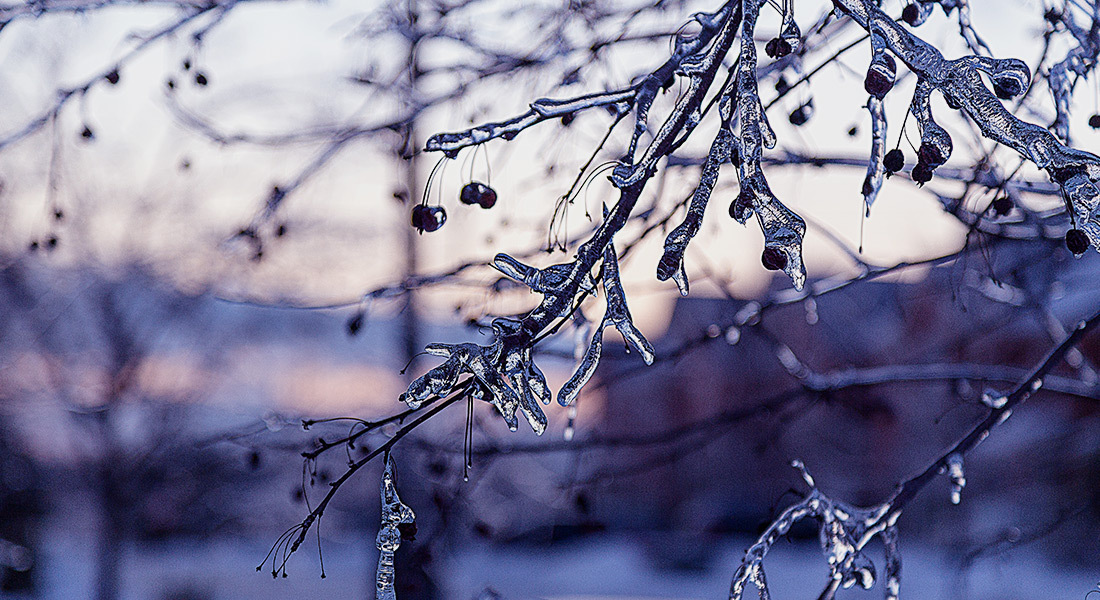How do I care for plants affected by winter weather?

Snow, ice, freezing temperatures and winter winds can definitely take their toll on plants, trees and shrubs in your southern Oregon yard. Tree branches coated in ice can snap and break. Budding flowers can have their blooms upset by a sudden deep freeze. Delicate plants can be crushed by the weight of snow and ice. And severe winds can uproot trees altogether. But there are things you can do to protect your plants before the storm comes and care for any damage in the aftermath. Here are some tips.
Before the storm
- Tie branches upward. For shrubs and smaller trees, bring the branches together and tie them into a more upright position. This will help minimize the effect of heavy snow or ice on any one branch and can improve the chances of the plant coming through the storm in good shape.
- Cover sensitive plants. Snow can impact leaves and fruit buds as they are developing. On more sensitive plants, cover them with anything from sheets, towels and blankets to cardboard or a tarp. You can also invert baskets or containers over the plants for protection. Pro tip: Cover plants before it gets dark out to trap warmer air inside.
- Bring container plants inside. If you have cold-sensitive container plants, bring them inside — even if it’s just your garage or shed — until the weather warms up a bit and the snows have passed for the season.
After the storm
- Remove snow and ice from branches. The extra weight of snow and ice can weigh down branches on trees and shrubs and cause limbs to break. If you can, use a rake, broom or stick to knock snow and ice off the branches to decrease the weight. It’s also a good idea to carefully remove snow from shrubs — especially flowering shrubs — that have fragile structures, such as arborvitae, azaleas, boxwoods, rhododendrons and roses.
- Leave snow around the base of your trees and shrubs. While snow can wreak havoc with branches and plants, it can actually insulate roots from harsh conditions. So after you knock the snow off your tree limbs, be sure and leave some at the base of your plants for insulation.
- Deal with any damaged branches. Cut off the jagged ends of any broken branches, and prune smaller limbs where they join larger branches to help the tree more quickly recover. While you can deal with small issues yourself, experts recommend using a certified arborist to remove any large branches that are broken or hanging. And whenever power lines are nearby, be sure to contact your utility provider right away.
Share This
